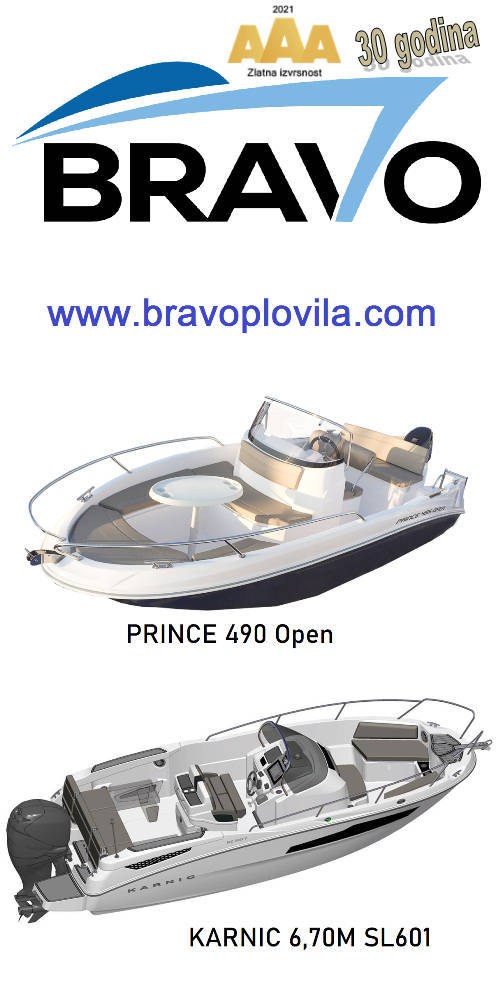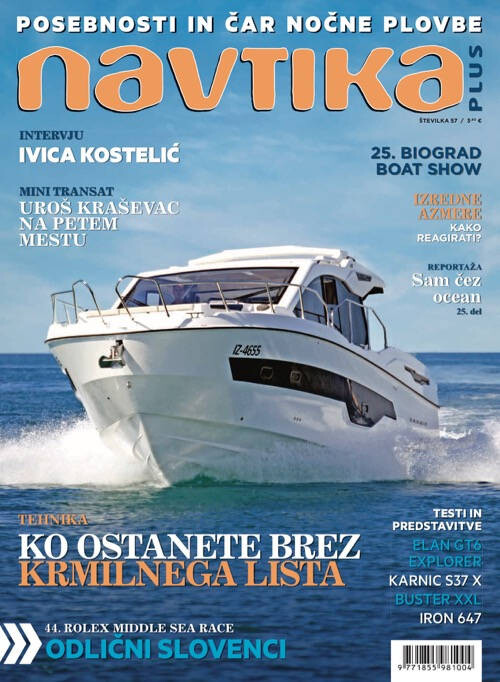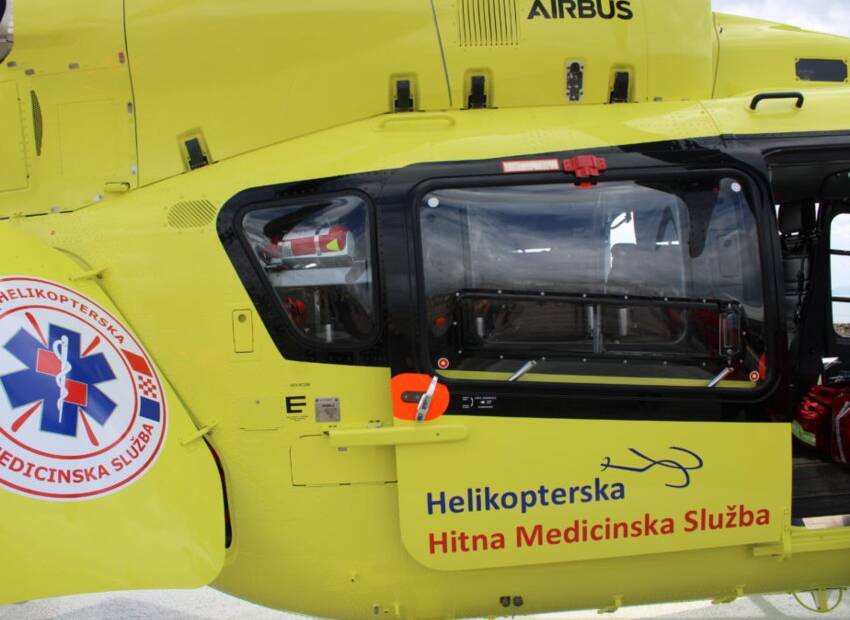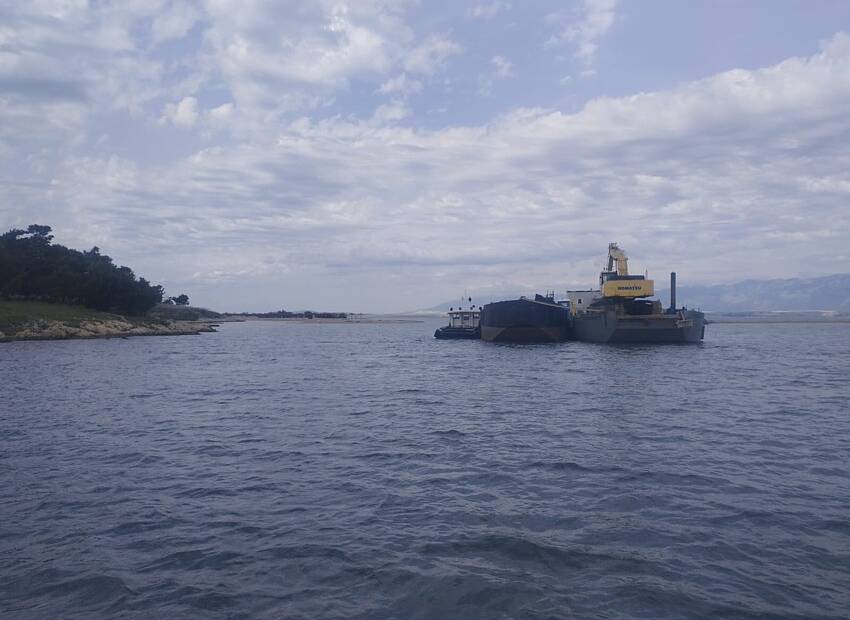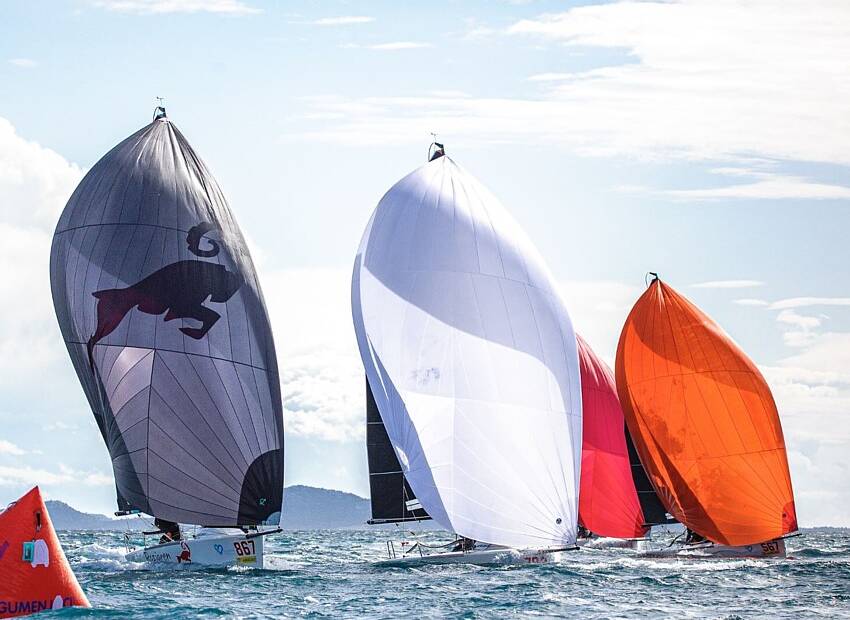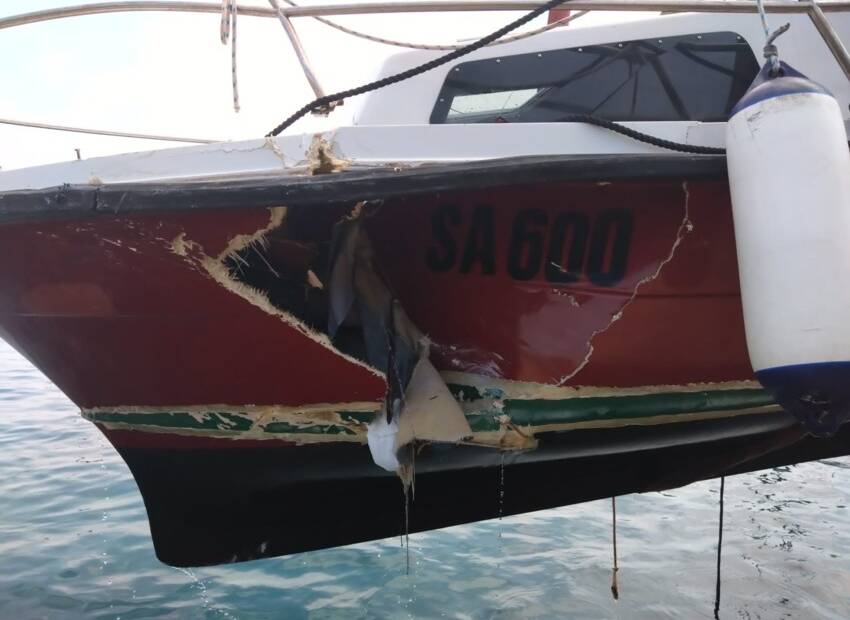Sea anchor chainplates
I´ve heard some experts say that the forces generated by the pull of a parachute sea anchor will pull your cleats right out of the deck. If you attach the parachute bridle to the cross beam of your catamaran, it will pull the crossbeam out of the bow.
I created my own answer to this objection. If you examine these pictures, you will see the parachute sea anchor chainplates that I put on my bows for use during storms, and I also sometimes use them at anchor in harbors if a major storm is headed my way. They create a chafe free way to attach a bridle to Exit Only.
These chainplates are twenty-five inches long on deck and consist of six millimeter thick stainless steel. On the underside of the deck is the same size of stainless plate, but it is only twenty inches long. Large bolts go through the deck and through both chainplates, and there is nearly zero chance that these chainplates will ever move. If they move, it´s because both bows will have been pulled off the boat.
Welded down both sides of the chainplate and sticking out in front of it is a stainless steel bail that is about as thick as my finger. The part of the bail that sticks out in front of the bow is where I attach my parachute bridle using d-shackles that I wire closed after the bridle is in place. The bridle has large stainless steel thimbles on it so there is no chafe on the arms of the bridle where they are shackled to the bails.
When we left New Zealand expecting to get hit by a low pressure area or caught in a squash zone, I attached my parachute bridles to the bail of the parachute anchor chainplate on each bow before I left port. Everything was ready to go if we needed to deploy the chute. When we got caught in the squash zone, we shackled the parachute sea anchor rode to the already attached bridle and we quickly and easily deployed our parachute. It wasn´t that big of a deal because everything was prepared in advance and we had tons of confidence in our gear and boat.
The bail that is welded to the sea anchor chainplate proved to be immensely strong. When we were anchored in Bequia in the Caribbean, a 115 foot long charter power yacht lost control of their vessel while raising anchor, and they plowed into our port bow. Fortunately, the sturdy bail on the sea anchor chainplate acted like a bumper putting a dent in their wayward bow which protected us from any damage to our hull. I have no doubts about the strength of our sea anchor chainplates and welded bail on our bow because it easily absorbed and survived the hit by that mega yacht. Our chainplates and sea anchor bridle system isn´t going anywhere.
The bail was also useful when we were crossing the Indian Ocean dodging giant logs after the tsunami. We occasionally hit tsunami debris that was small, but when we got into logs that were bigger than our boat, I had to do something to protect our bows in the event of a collision with a tree. I used two long wooden oars to protect our bows. I passed the handles of the oars vertically through the bails on the bow, and then I lashed the oars into place. So I had heavy duty oars running down the full length of the bows, and if we hit anything, the oars would take the impact and spread the force of the impact so a hull penetration would not occur. One oar survived intact, and the other oar ended up being badly splintered by the time we were through the tsunami debris field. Even with those precautions, we still had some tsunami related bow damage.
If we did not have those bails sticking out in front of our bows, we would not have had a place to securely attach those oars on the front of our bows. It´s quite possible that we could have had some major tsunami related damage if those oars couldn´t have been lashed in place.
I love my sea anchor chainplates and bails. They saved me north of New Zealand in a squash zone, they saved me from serious tsunami damage in the Indian Ocean, and they saved me when I was hi






